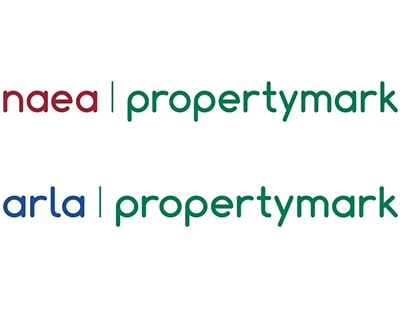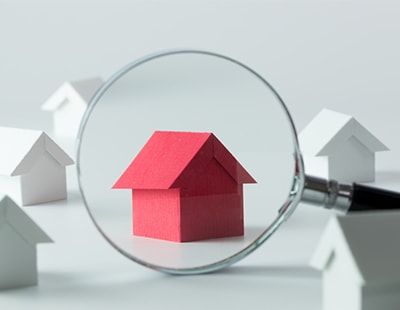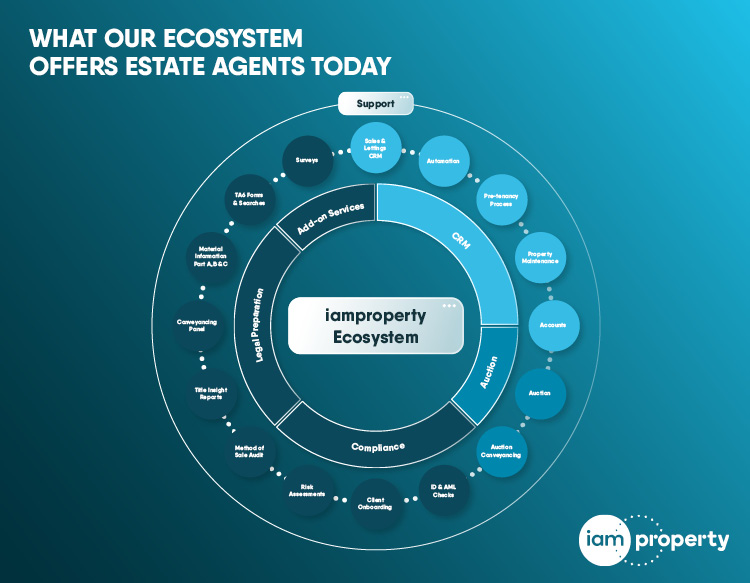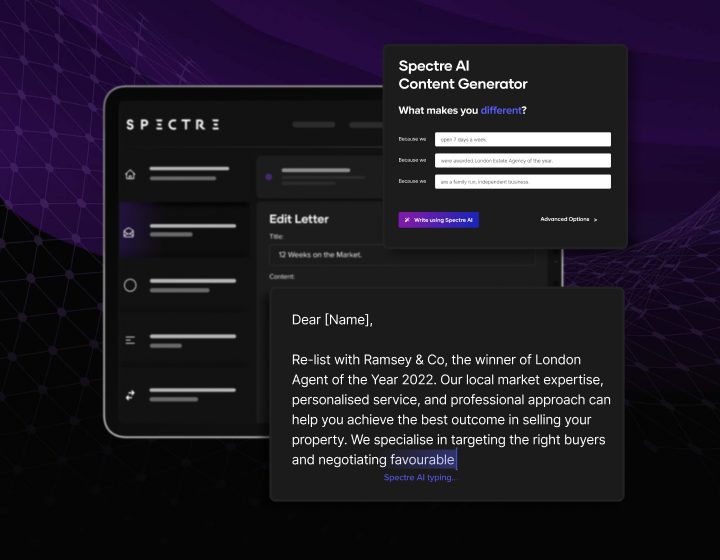
Propertymark is calling in the government for agents to be trained in the use of software operating the Unique Property Reference Numbers system - similar to car licence plates.
UPRN allows each address in the country to have a unique identifying number and can have ‘attached’ to that number the sort of activities and characteristics which agents need to know about - for example, planning permission for when it was first built and subsequent extensions, building regulations, council tax payments, utility providers, EPCs, health and safety checks on rental properties, and more.
The government this week opened the UPRN system - which is held by GeoPlace, which has Ordnance Survey as its parent company - with the aim of ultimately allowing digital searches for properties producing more comprehensive information than in the past.
This is ultimately expected to slash time for conveyancing and transactions, and improve the accuracy of information passed between parties to a sale or rental.
Propertymark participated in the response process to the government’s geospatial consultation last year, and now says it “believes that it would be valuable for estate agents to be trained in the use of Geographic Information System mapping software, particularly for its use throughout the process of a sale and for marketing. Propertymark has called for Ordnance Survey to begin integrating further details already publicly available into its data to make systems easier to use and more beneficial to agents.”
ARLA says: “The data council’s hold for properties is now much more streamlined and in turn, will mean they can more efficiently deal with EPC queries which will speed up elements of an agent’s role.”
Accordng to GeoPlace, its 12-digit UPRNs are “like a National Insurance number for physical objects. Everything in Great Britain can be identified with a UPRN.”
Local and central government bodies, the emergency services, insurance providers, and utility companies already use them under a deal allowing every organisation in the public sector to use them without charge.
Last month Chris Pincher, the housing minister, welcomed the government’s opening of access to UPRNs by saying: “This is the most powerful boost for the UK PropTech sector in a generation, unlocking new levels of digital innovation on a national scale. Open identifiers are crucial for tech entrepreneurs and wider industry – they will enable housing developers to find sites that have the most potential, helping deliver much-needed new homes across the country.”

















%20-%20IMAGE%20Client%20Accounting%20%E2%80%93%20what%20are%20your%20options.jpg)


.png)
.png)
.png)
%20(002).png)






%20(002).jpg)





%20A%20property%20tale%20for%20our%20times.png)








Join the conversation
Jump to latest comment and add your reply
This has already been introduced and is operational in the more enlightened service solutions to the industry.
Its a way of individual service solution providers collaborating together to provide the next generation of integrated #PSP (property sales platform) the stuff that's challenging the portals and legacy CRM systems.
It is a sad irony that Covid-19 is in many ways putting Geospatial back under the microscope, as a tool which was first utilised in a mainstream way nearly two-centuries ago to map out the French cholera epidemic of 1832.
As at present Geospatial data and technologies, via apps and dashboard applications, are being utilised to fight the present global pandemic.
But I get a little ahead of myself, what is Geospatial? It is mapping the world with numerous amounts of data sets, which Tomlinson half a century ago formulated into GIS – Geographic Information System, which allows analysis and strategies to be pulled out of the data.
‘A Geographic Information System (GIS) integrates hardware, software, and data for capturing, managing, analysing, and displaying all forms of geographically referenced information. GIS allows users to view, understand, question, interpret, and visualize data in many ways that reveal relationships, patterns, and trends in the form of maps, globes, reports, and charts.’
Then fifteen-years ago ‘Google Maps’ produced a public version, signalling a gold rush of new technologies. Timing also was a factor with new cloud computing, allowing Big Data to be meaningful, useful and have a commercial purpose.
Today geospatial technologies are utilised across the real estate spectrum, from planning and the environment to asset management, and the actual way data is presented using many of the tools from the burgeoning visual tech industry is reshaping the way we understand the physical world we live in.
Vector and Raster are the two data formats used to store geospatial data. Vector data use X & Y coordinates to determine the locations of points, lines, and areas (polygons) that correspond to map features, the boundaries, and centres of features, whereas Raster data, uses a matrix of pixels to define where features are located.
Regarding application, in the world of real estate – some agents have heavily invested in Geospatial technology. Knight Frank developed ‘SKYWARD’, which utilised GIS software to establish that over 40,000 new properties could be built in areas of London, through building upwards without impinging on the existing skyline.
Utilising Ordnance Survey data in a 3D-spatial format, and other data sets such as Land Registry; a real case of commerce and technology coming together.
Geospatial has many applications, if you think about it is the science of integrating physical geography/cartography and data and then digitally extrapolating the new ways to solve old and new problems.
What is most interesting to me is that its strongest manifestations are like relics from the computer gaming world of yesteryear. Where (VR) Virtual Reality, (AR) Augmented Reality and (MR) Mixed Reality seem to reign supreme, allowing a more youthful group of PropTech visionaries to see, and taste the world in a completely different way. Strapped into a comfy chair with an electronic headset.
CTA
For me, aged 57, and having over 30-years of front-line real estate experience before being a born again PropTech Prophet; I too perhaps see other large jewels that Geospatial can deliver, from the comfort of my armchair with a beer in one hand and two-eyes on the future.
The quantum jump that the £6.5BN UK property industry can make if Geospatial PropTech is utilised to produce a Digital Logbook for every property.
This Digital logbook would be a singular point of truth, a depositary not just for the paper lodged since 1832 at HM Land Registry, showing title, boundaries, etc, but includes all data both physical and paper generated that relates to a precise property.
At a stroke, all keyholders in the buying and selling of property would digitally be in the same room, with access to all the information, the buyer, vendor, agent, solicitors, surveyor, and mortgagee.
Digitise the paper led and archaic legacy-based conveyancing protocol and with automated processes the present 20-week white knuckle ride of uncertainty that is the precursor to most people buying a home, with 31% of them failing the first attempt, would be a thing of the past. An old man’s pipedream, maybe?
Until you spend a few hours in the company of PropTech legends Riccardo Iannucci-Dawson and Craig Massey co-founders of Yourkeys, who have got the conveyancing process for new homes on PropTech digital roller-skates, with reservation to exchange in just seven days. All they are waiting for is the rest of the industry to catch up.
Very well put Andrew. Something so simple as a unique number per property has the potential to link so many datasets together, the big problem is getting central and local government to release their data....let alone with UPRN’s included.
It would seem the UPRN is still closed source, you need at least an addressbase core licence (at a cost) to be able to find the UPRN of a specific property.
The UPRN download available from Ordance Survey is basically just a list of UPRN's with the lat/longs. Pretty useless for any proptech supplier.
Until this information is made free I can't see it being used by proptech companies as a unique identifier.
Shame they promised so much, but I'm guessing they (Ordinance Survey and the Post Office) still make significant income from their addressing products.
I remember being involved in some of the early meetings on UPRNs with Intelligent Addressing some 18 years ago. The problem then was that it cost 27p per lookup from memory.
Now the data is far more widely available and affordable.
It would be excellent to see this used as the ID for a property transaction (where it exists). No more reliance on fuzzy address matching and trying to make the best of poor data between systems (I can only dream).
My team have just released their latest REST API which funnily enough includes an endpoint for finding a UPRN given an address string - its used in our mio chainbulding product.
Please login to comment